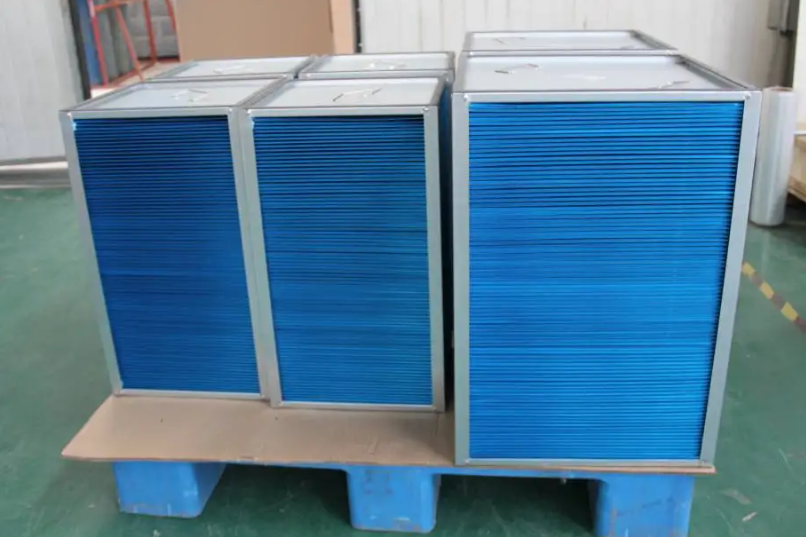
Introduction : Le noyau d'échange thermique est un noyau d'échange thermique à flux croisé, dans lequel deux flux d'air de températures différentes circulent en flux croisé positif, et un échange de chaleur se produit entre les deux fluides, leurs canaux étant complètement séparés.
Les échangeurs de chaleur à plaques à flux croisés peuvent être utilisés dans les centrales de traitement d'air comme composant principal de la récupération de chaleur. Ils peuvent également être utilisés dans les systèmes de ventilation, installés dans les conduits d'air comme composant principal de la section de récupération de chaleur, et leur position d'installation est facilement modulable.

Scénarios d'application : Solutions de récupération de chaleur résiduelle pour les machines de revêtement, les machines à laminer, etc., solutions de récupération de chaleur pour le séchage des légumes, des noix, des peaux de crevettes et du poisson séché, récupération de chaleur résiduelle pour les salles de cuisson de peinture, technologies d'économie d'énergie pour la récupération de chaleur résiduelle des gaz d'échappement tels que l'électricité des chaudières et des usines.
La structure modulaire permet de combiner différentes tailles et hauteurs d'empilement afin de répondre à diverses applications en matière de flux d'air et d'environnement.
Matériaux : En fonction des conditions de travail sur site, différents matériaux peuvent être sélectionnés, tels que la feuille d'aluminium hydrophile, la feuille d'aluminium en résine époxy, l'acier inoxydable, etc.
